Don't wanna be here? Send us removal request.
Text
part 2
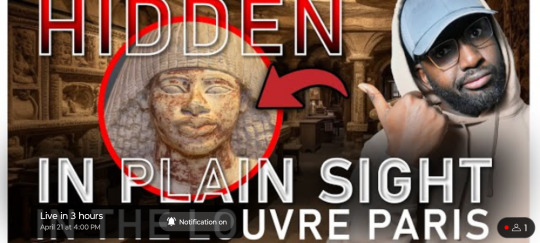
.
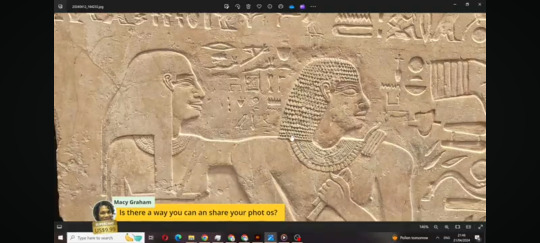
.

.
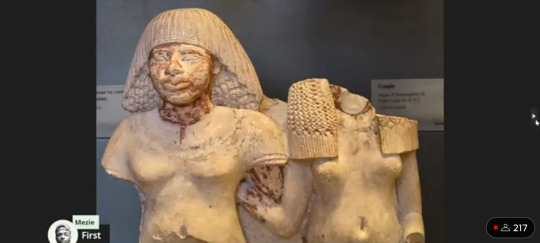
.

.

.
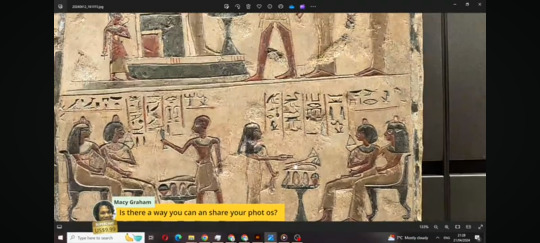
.
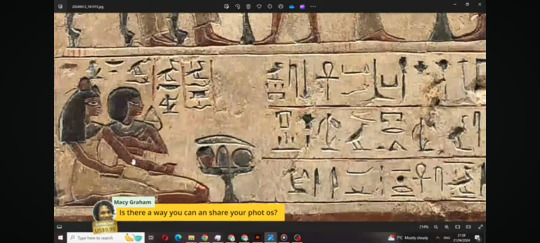
.

.click each picture to see close






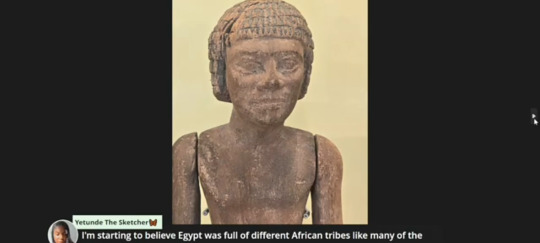






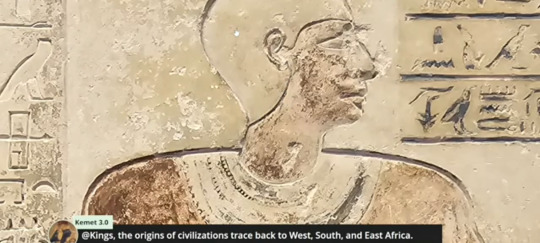
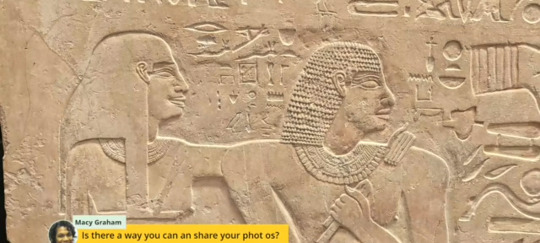



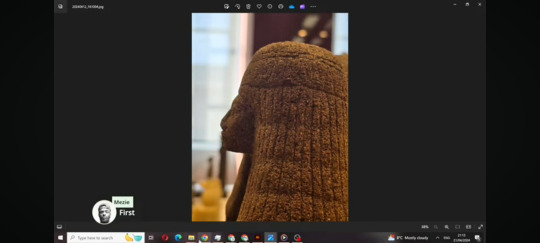
Be sure to stop at the bottom where it says "More from @afcnamrcn23". Don't be distracted by the pictures and links under that. They will occur again so that you can continue with the main post in sequence
0 notes
Text
the women with variation

Painting from Nefferronpet circa 1448 - 1422, and women from a village near Aswan, Egypt

From Nebamon and Ipuky

Elephantine, Egypt

Women near or in Luxor
.
Women and girls that are painted in a chestnut shell dark reddish brown color

Nubian Egyptians and Userhat and wife Ka


Wall paintings of Chonsu tt31

Woman and man enjoy a soda near the Aswan High Dam in southern Egypt

.
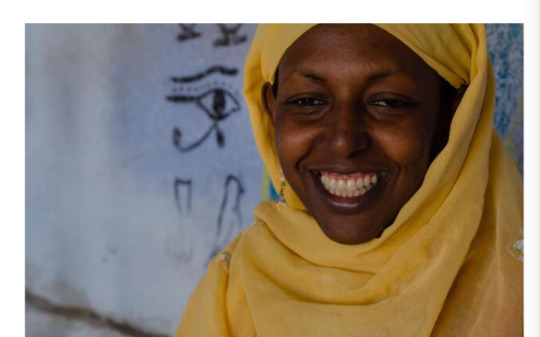

Nubian Egyptian ladies of Aswan, Egypt


Tomb TT175

A couple of the 18th dynasty (Louvre Museum, Paris, France), unknown painting (?), the couple again in different lighting,


Nebamon and Ipuky

.

Woman and child of Assouann (Aswan) 1800s

18th dynasty, Hetep and Mouttouy (mother and daughter),

A 12th dynasty woman found in chambers of Antefoqer and Senet - TT60


Wall paintings of Chonsu tt31
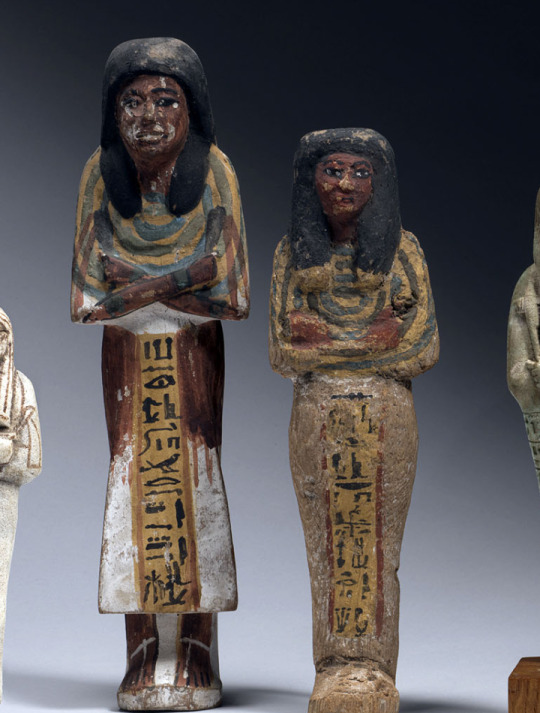
From the Art & History Museum (Brussels) presents the exhibition Expedition from Egypt

Noble couple, Dayton Institute


From top to bottom and left to right, Pashedu and his wife (dynasty 18) at the British Museum, a limestone seated statue of the male official Hama...y and his wife Weretneferet at the British Museum, Idet and Ruiu ,Turin Italy, and two Beja women of North Sudan. Egyptian Nubians of Aswan area under that


TT81 and...

Egyptian Museum of Turin, Fragments from tomb tt246 of Senenra (?). 18th Dynasty, 1350-1292 BC

.
Many Arabs of North Sudan migrated to the area in the 12th century, though some were there prior. The indigenous people are generally "black". We often see beautiful marriages between a man who leans black, and a woman of a Arab persuasion. Could this be a repeat of ancient Egypt's dark skin man and yellow woman...live and direct in modern times. https://www.tumblr.com/shwat2013/706678651221114880/httpswwwgooglecomsearchclient-ms-an?source=share
Major discrepancies in past photos of Menna and wife vs now
link
Be sure to stop at the bottom where it says "More from @afcnamrcn23". Don't be distracted by the pictures and links under that. They will occur again so that you can continue with the main post in sequence
0 notes
Text
a https://www.mediastorehouse.com/fine-art-finder/artists/european-photographer/bicharis-near-aswan-egypt-b-w-photo-23009326.html
b https://st.violity.com/auction/big/auctions/10/56/75/9/105675971.jpg
c
https://www.bridgemanimages.com/en-US/noartistknown/port-said-family/photograph/asset/3791338…
d
https://www.bridgemanimages.com/en-US/noartistknown/egyptian-family/nomedium/asset/3791332
0 notes
0 notes
Text

Top picture):Accurate reproduction of Ashayet, a queen of Mentuhotep, from the New York Metropolitan Museum. She is clearly in the "Nubian color". Notice how the two males in the scene are different shades of "reddish brown". (Bottom) The other two coal black ladies in the Ashayet painting. This is the actual scene in the Cairo Museum. People relate this queen's color to religious symbology, yet a dilemma is created when we try to explain away the two tribute bearers in the same scene


Actual paintings from Deir el-Bahari (TT308)
Link to rarely seen paintings

Close up


Men from the desert West of the Nile, southern Egypt

Woman from Aswan in the 1800s ( photo by Gabriel Lekegian)

Woman of Aswan Egypt

Men of Elephantine area in Egypt
.
Be sure to stop at the bottom where it says "More from @afcnamrcn23". Don't be distracted by the pictures and links under that. They will occur again so that you can continue with the main post in sequence
.
0 notes
Text
The Badarian culture provides the earliest direct evidence of agriculture in Upper Egypt during the Predynastic Era. It flourished between 4400 and 4000 BC, and might have already emerged by 5000 BC...
Badari culture is so named because of its discovery at El-Badari (Arabic: البداري), an area in the Asyut Governorate in Upper Egypt. It is located between Matmar and Qau, approximately 200 km (120 mi) northwest of present-day Luxor (ancient Thebes)...
Older and modern scholarship have characterised the Badarians as an indigenous, Northeast African population that was rooted in a localised, context.Frank Yurco considered the Badarians as exhibiting a "mix of North African and Sub-Saharan physical traits" and referenced older, analysis of skeletal remains which "showed tropical African elements in the population of the earliest Badarian culture". Recent archaeological evidence has suggested that the Tasian and Badarian Nile Valley sites were a peripheral network of earlier Northeast African cultures that featured the movement of Badarian, Saharan, Nubian and Nilotic populations.
In 1971, Eugene Strouhal came to the conclusion that the distribution of the Badarian skulls extends from the Europoid to the Negroid range. Of the total 117 skulls, the majority of 94 skulls showed mixed Europoid-Negroid features. The share of both components was nearly the same, with some overweight to the Europoid side. He noted the Negroid component among the Badarians is anthropologically well based. Even though the share of 'pure' Negroes is small (6-8%), being half that of the Europoid forms (12.9%), the high majority of mixed forms (80.3%) suggests a long-lasting dispersion of Negroid genes in the population. Additionally, in some of the Badarian crania hair was preserved, in the first series they were curly in 6 cases, wavy in 33 cases and straight in 10 cases. They were black in 16 samples, dark brown in 11, brown in 12, light brown in 1, and grey in 11 cases.
Sonia Zakrzewski (2003 Durham University, England)) found that samples from the Badarian to the Middle Kingdom in Upper Egypt had "tropical body plans" but that their proportions were actually "super-negroid", i.e. the limb indices are relatively longer than in many "African" populations. She proposed that the apparent development of an increasingly African body plan over time may also be due to Nubian mercenaries being included in the Middle Kingdom sample.
In 2005, S.O.Y. Keita examined Badarian crania from predynastic upper Egypt in comparison to European (Norway and Hungary) and various tropical African crania (Southern Africa, Mali and Kenya). He found that the predynastic Badarian series clustered much closer with the tropical African series. Although, no West Asian or other North African samples were included in the original study as the comparative series were selected based on "Brace et al.'s (1993) comments on the affinities of an upper Egyptian/Nubian epipalaeolithic series". Keita further noted that "additional analysis using material from Sudan, late dynastic northern Egypt (Gizeh), Somalia, Asia and the Pacific Islands show the Badarian series to be most similar to a series from the northeast quadrant of Africa and then to other Africans". Moreover, Keita criticised the methodology of the 1993 Brace study for excluding "the Maghreb, Sudan, and the Horn of Africa" from the designated Sub-Saharan group samples which he argued was nearly categorised and "(incorrectly)" as monolithic". Keita further commented on the findings of Boyce that whilst the "post-Badarian southern predynastic and a late dynastic northern series (called "E" or Gizeh) cluster together, and secondarily with Europeans", in the primary cluster with Egyptian groups there were also remains representing populations from ancient Sudan and recent Somalia.[14]
Sonia Zakrzewski (2003) found that samples from the Badarian to the Middle Kingdom in Upper Egypt had "tropical body plans" but that their proportions were actually "super-negroid", i.e. the limb indices are relatively longer than in many "African" populations. She proposed that the apparent development of an increasingly African body plan over time may also be due to Nubian mercenaries being included in the Middle Kingdom sample.
In 2023, Christopher Ehret reported that the physical anthropological findings from the “major burial sites of those founding locales of ancient Egypt in the fourth millennium BCE, notably El-Badari as well as Naqada, show no demographic indebtedness to the Levant”. Ehret specified that these studies revealed cranial and dental affinities with "closest parallels" to other longtime populations in the surrounding areas of Northeastern Africa “such as Nubia and the northern Horn of Africa”. He further commented that the Naqada and Badarian populations did not migrate “from somewhere else but were descendants of the long-term inhabitants of these portions of Africa going back many millennia”. Ehret also cited existing, archaeological, linguistic and genetic data which he argued supported the demographic history.
0 notes
Text
.
.














.Video link
youtube

Menna and wife from the video in the top pictures (2022), and by a Scottish photographer in 1994 in the bottom two pictures
.
Major discrepancies in past pictures of Menna a and wife xs new ones. The first is by a Scottish photographer from 1994
link
Be sure to stop at the bottom where it says "More from @afcnamrcn23". Don't be distracted by the pictures and links under that. They will occur again so that you can continue with the main post in sequence
0 notes
Text
Major discrepancies in past pictures of Menna and wife vs new ones
Menna and wife taken by a Scottish photographer in 1994. Go to desktop version to zoom in close to see contrast.
link
Menna and wife now. Zoom in to see contrast clearly
link
https://en.m.wikipedia.org/wiki/File:By_ovedc_-Tomb_of_Menna-_10.jpg
Suspicious "CLEANING" of art with a "SCIENTIFIC" approach 1

2.

Menna with daughters. Luckily, they haven't gotten to these yet
link
Menna and family
link
Userhat and wife. Scroll to first and second picture..
link
0 notes
Text
Pre and very early dynasty evidence

Ivory statue of a 1st through 2nd dynasty ruler at the British museum compared to a man of The Shilluk of Southern Sudan Renowned old school Egyptologist WM Flinders Petrie identified the statue as Nubian, based on appearance. In his early 20th century book, Making of Egypt, he relates this very statue to the predynastic Nubian people (Aunu), on page 68...in reference to picture 10, plate XXXVII (illustrations few pages after). In the paragraph above it, he says these Aunu were an indigenous race and occupied Southern Egypt and Nubia (N Sudan). He felt that Menes was a different type, but I spotted his appearance in the Shilluk people.
Excerpts from the 1939 book Making of Egypt by old school British Egyptologist W M Flinders Petrie. He, along with others that preceeded him, recognized Nubian involvement with the development of Ancient Egypt
link
More traditional Shilluk people of Southern Sudan
link
.

Petrie obviously believed the type was still in the population after dynasty one, because a comparison was given to a Beja woman and inner African man, 12th dynasty statues.

Nynetjer of the 2nd dynastic period.
1
link
2
link
.

A missing statue of an apparent early dynasty unidentified pharaoh (photographed by an African American researchers between the 1970s and 1985 at the Cairo Museum)…compared to Nynetjer

The protohistorical leader Tera Neter compared to an old picture of the Shilluk of Sudan. Archeologist Petrie believed that the Anu (Sudan/Southern Egypt) were the first inhabitants

Narmer/Menes (?). The first established"pharaoh - at the Petrie Museum of Egyptian Archaeology, London. https://commons.wikimedia.org/wiki/File:Limestone_head_of_a_king._Thought_by_Petrie_to_be_Narmer._Bought_by_Petrie_in_Cairo,_Egypt._1st_Dynasty._The_Petrie_Museum_of_Egyptian_Archaeology,_London.jpg
The Nubian A Group predates Egypt
Link
https://www.tumblr.com/afam24/763606868372471808/nubian?source=share
Badarian culture




Pre dynastic Badarian statues from the British and Ne...Museums
The Badarian culture provides the earliest direct evidence of agriculture in Upper Egypt during the Predynastic Era. It flourished between 4400 and 4000 BC, and might have already emerged by 5000 BC...
Badari culture is so named because of its discovery at El-Badari (Arabic: البداري), an area in the Asyut Governorate in Upper Egypt. It is located between Matmar and Qau, approximately 200 km (120 mi) northwest of present-day Luxor (ancient Thebes)...
Archeologist/anthropologist that believe the Badarian culture was black African ( some conclude a mixture or black African and caucasian types
1
Older and modern scholarship have characterised the Badarians as an indigenous, Northeast African population that was rooted in a localised, context. Frank Yurco considered the Badarians as exhibiting a "mix of North African and Sub-Saharan physical traits" and referenced older, analysis of skeletal remains which "showed tropical African elements in the population of the earliest Badarian culture". Recent archaeological evidence has suggested that the Tasian and Badarian Nile Valley sites were a peripheral network of earlier Northeast African cultures that featured the movement of Badarian, Saharan, Nubian and Nilotic populations.
2
In 1971, Eugene Strouhal came to the conclusion that the distribution of the Badarian skulls extends from the Europoid to the Negroid range. Of the total 117 skulls, the majority of 94 skulls showed mixed Europoid-Negroid features. The share of both components was nearly the same, with some overweight to the Europoid side. He noted the Negroid component among the Badarians is anthropologically well based. Even though the share of 'pure' Negroes is small (6-8%), being half that of the Europoid forms (12.9%), the high majority of mixed forms (80.3%) suggests a long-lasting dispersion of Negroid genes in the population. Additionally, in some of the Badarian crania hair was preserved, in the first series they were curly in 6 cases, wavy in 33 cases and straight in 10 cases. They were black in 16 samples, dark brown in 11, brown in 12, light brown in 1, and grey in 11 cases.
3
Sonia Zakrzewski (2003 Durham University, England)) found that samples from the Badarian to the Middle Kingdom in Upper Egypt had "tropical body plans" but that their proportions were actually "super-negroid", i.e. the limb indices are relatively longer than in many "African" populations. She proposed that the apparent development of an increasingly African body plan over time may also be due to Nubian mercenaries being included in the Middle Kingdom sample.
4
In 2005, S.O.Y. Keita examined Badarian crania from predynastic upper Egypt in comparison to European (Norway and Hungary) and various tropical African crania (Southern Africa, Mali and Kenya). He found that the predynastic Badarian series clustered much closer with the tropical African series. Although, no West Asian or other North African samples were included in the original study as the comparative series were selected based on "Brace et al.'s (1993) comments on the affinities of an upper Egyptian/Nubian epipalaeolithic series". Keita further noted that "additional analysis using material from Sudan, late dynastic northern Egypt (Gizeh), Somalia, Asia and the Pacific Islands show the Badarian series to be most similar to a series from the northeast quadrant of Africa and then to other Africans". Moreover, Keita criticised the methodology of the 1993 Brace study for excluding "the Maghreb, Sudan, and the Horn of Africa" from the designated Sub-Saharan group samples which he argued was nearly categorised and "(incorrectly)" as monolithic". Keita further commented on the findings of Boyce that whilst the "post-Badarian southern predynastic and a late dynastic northern series (called "E" or Gizeh) cluster together, and secondarily with Europeans", in the primary cluster with Egyptian groups there were also remains representing populations from ancient Sudan and recent Somalia.
5
Here's one that somehow came to the opposite conclusion (Hmmm...?).
A 1993 craniofacial study performed by C. Loring Brace et al reached the view that "The Predynastic of Upper Egypt and the Late Dynastic of Lower Egypt are more closely related to each other than to any other population. As a whole, they show ties with the European Neolithic, North Africa, modern Europe, and, more remotely, India, but not at all with sub-Saharan Africa, eastern Asia, Oceania, or the New World
6
In 2023, Christopher Ehret reported that the physical anthropological findings from the “major burial sites of those founding locales of ancient Egypt in the fourth millennium BCE, notably El-Badari as well as Naqada, show no demographic indebtedness to the Levant”. Ehret specified that these studies revealed cranial and dental affinities with "closest parallels" to other longtime populations in the surrounding areas of Northeastern Africa “such as Nubia and the northern Horn of Africa”. He further commented that the Naqada and Badarian populations did not migrate “from somewhere else but were descendants of the long-term inhabitants of these portions of Africa going back many millennia”. Ehret also cited existing, archaeological, linguistic and genetic data which he argued supported the demographic history.
Much is cited
7
In 2011, Michelle Raxter examined the changes in limb proportions and body sizes in ancient Egyptians in a worldwide and regional comparative thesis study. The study featured 92 males and 528 female samples which included skeletal remains from the Badarian period. The Egyptian body sizes were compared with Nubian samples, as well as to modern Egyptian samples and other higher and lower latitude populations. Overall, the study found that "Ancient Egyptians have more tropically adapted limbs in comparison to body breadths, which tend to be intermediate when plotted against higher and lower latitude populations. These results may reflect the greater plasticity of limb lengths compared to body breadth. The results might also suggest early Mediterranean and/or Near Eastern influence in Northeast Africa". Raxter also acknowledged that a larger sample collection from the early and late predynastic groups would have enabled "closer examination of biolog
Link
https://en.wikipedia.org/wiki/Badarian_culture
Nabta Playa in southern Egypt, very close to Sudanese border. Today the region is characterized by numerous archaeological sites. The Nabta Playa archaeological site, one of the earliest of the Egyptian Neolithic Period, is dated to circa 7500 BC. At least 2 "mainstream" archeologist have identified it's Sub Saharan affinities and character, and established a connection to ancient dynastic Egypt due to Hathor cult practices
link
Be sure to stop at the bottom where it says "More from @afcnamrcn23". Don't be distracted by the pictures and links under that. They will occur again so that you can continue with the main post in sequence.
.
0 notes
Text
.




Middle kingdom woman braiding hair NY Metropolitan Museum https://www.metmuseum.org/art/collection/search/544225

Barber from the 18th dynasty paintings of Userhat and East Africans
link
https://www.metmuseum.org/art/collection/search/557688.
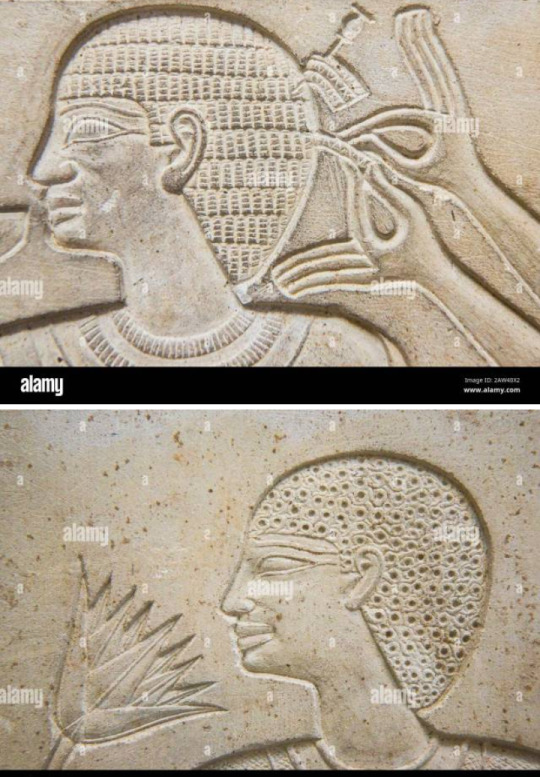
Kawit, a queen of Mentuhotep, middle kingdom
https://commons.wikimedia.org/wiki/File:Princess_Kaiwit_having_her_hair_dressed,_circa_2000BC._Wellcome_M0006211.jpg#mw-jump-to

Woman and daughter
One of the most beautiful statues that depict the Egyptian daily life. A limestone statue of a woman and her daughter from...12th Dynasty represents a seated woman with her legs stretched out in front of her while her daughter sits on her legs to comb her hair to trim it. Ancient Egyptian hair styles, especially women, were elaborate and elegant and were often created with ribbons, floral wreaths and elegant pins. - From Petrie discoveries 1899, The Memphis
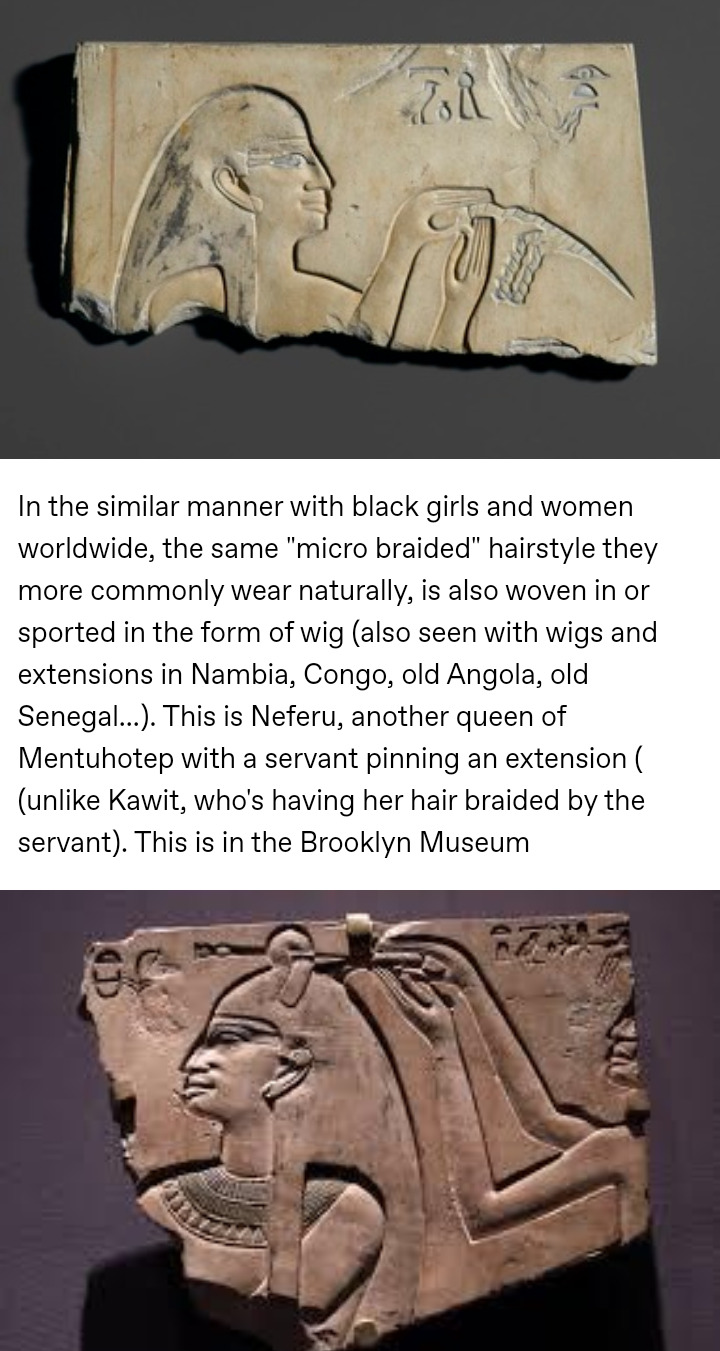
Queen Neferu


North Sudanese women braids child's hair, and a 12th dynastic lady braids hair ( Metropolitan Museum). We can't keep generalizing as wigs or extentions after seeing this. Below is a woman and child of Aswan Egypt ( early to mid 1900s) braiding

Nubian girls seen in Northern, Egypt of the 1800s...pictured in Columbus expedition in Chicago “Cairo streets”, Frank Leslie’s popular monthly, January 1894 Page 61. They are compared to a young lady of the 18th dynastic period

Lady of the 19th dynasty Cairo
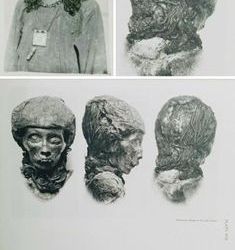
The girl on the top left is Bishari from Southern Egypt, 1910. This is compared to the mummy from the tomb of Queen Meryet-Amun at Thebes. It was shown in the 1930s book . “The tomb of Queen Meryet-Amun at Thebes”. Photographs by Harry Burton; plans by Walter Hauser and catalogue by Charlotte R. Clark. She lived in the early 18th dynasty. WINLOCK Herbert E.

Bishari woman in Egypt (1880s). Photo by Zangaki brothers.

If one can look at the Beja, who live nearby N. Sudan and Southeast Egypt, and seriously doubt a "black" presence in ancient Egypt, then it's not intellectually honest. The mummy of Ahmose Inhapi has the same hairstyle and hair type as the girl on the lower right. Beja/Bishari people tend to have coarse straight, loosely curled, frizzy, and half frizzy almost stringy look
Even a close up of mummies like Ahmose Inhapi, Lady Rai, or Nesitanebetashru seem to show wool at the base, and unloosening of braids forming a curly-q look at the ends. Old grainey pictures can be misleading.

This 1992 Museum of Fine Arts publication on ancient Nubian culture proves that mainstream academia recognizes the hairstyles as leaning more towards black culture. Nodjmet of dynasty 20 is compared to girls from inner Sudan on page 56 - 57.https://archive.org/details/Nubia
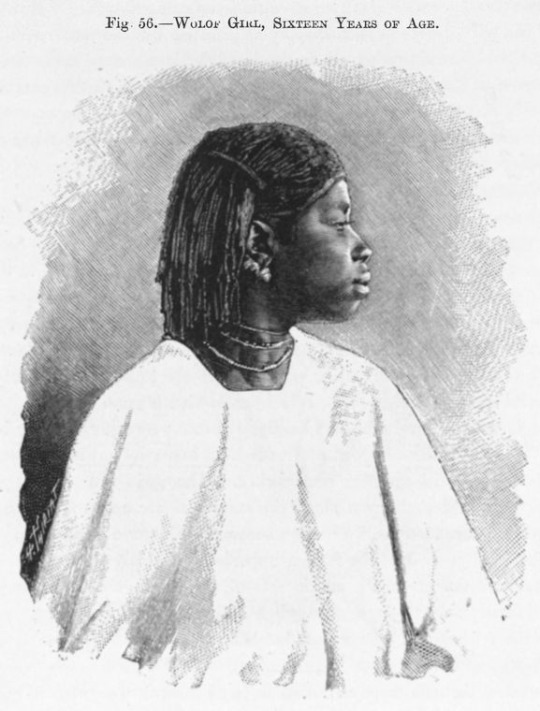
Wolof girl of Senegal , 1800s
This micro braided hairstyle was more commonly worn by blacks over time for convenience and necessity more than style - due to the hairtexture. It's far more innate and continuous in these populations. Scroll to … "Black Hair during slavery and a historical view of afro-textured hair." Here's a quick excerpt… "Plaits, braids and cornrows were the most convenient hairstyles to keep their hair neat and maintained for a week…". https://en.m.wikipedia.org/wiki/African-American_hair#:~:text=Plaits%2C%20braids%20and%20. .

Ahmose Nefertari 17th -18th dynastic period

Sudan, 1800s
Ink
https://www.alamy.com/portrait-of-two-young-women-with-braided-hair-shawls-and-jewellery-sitting-outside-caption-reads-soudanese-women-image566663251.html. .
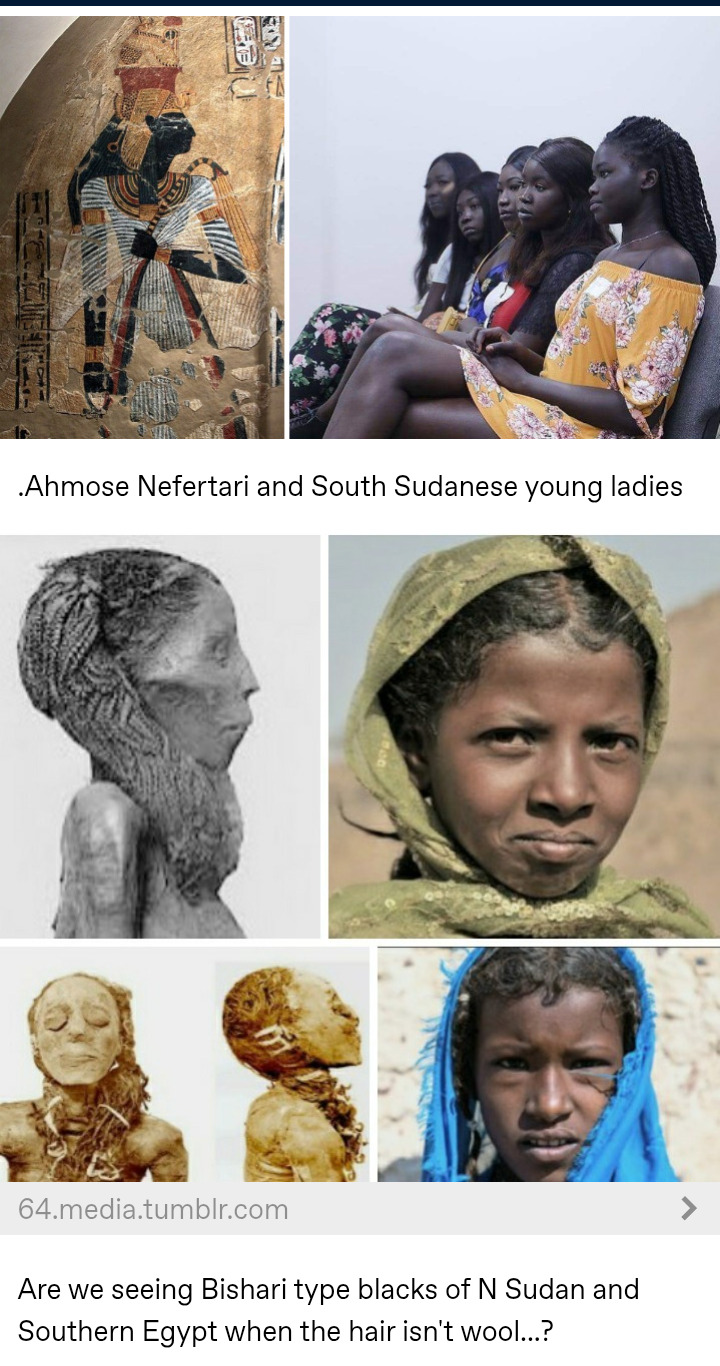
.
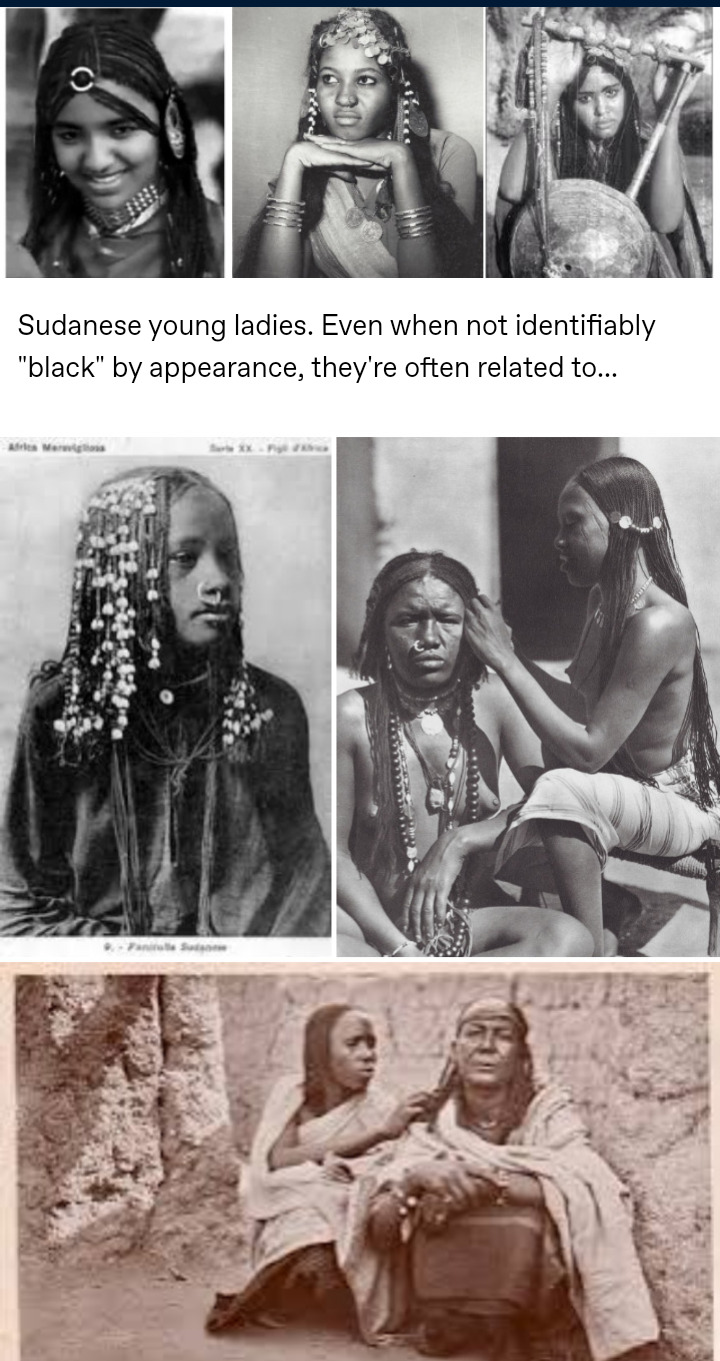
Sudan 1900s
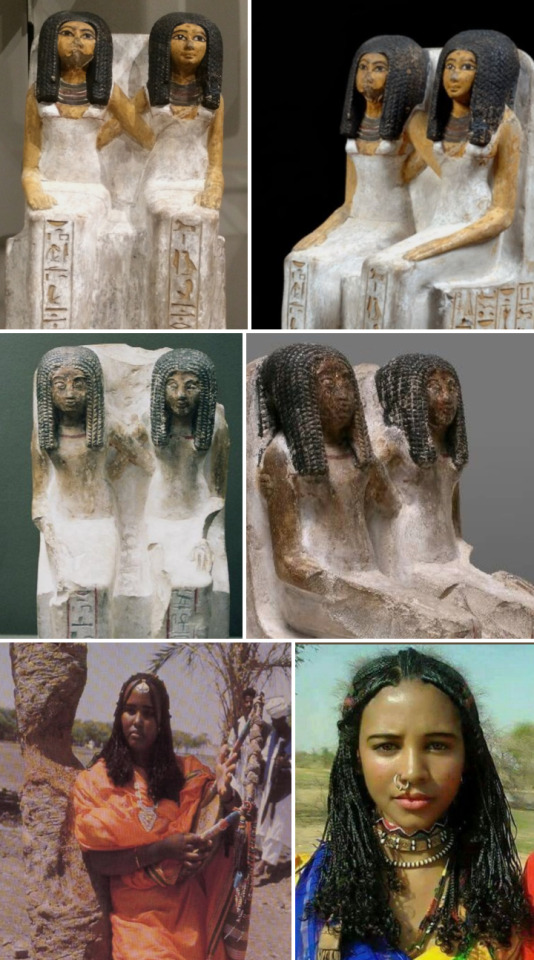
Idet and Ruiu, Hetep and Mouttouy (museum says everything is painted), and two North Sudanes Nubian ladies
It is very clear these styles are more closely related to people of a "black" persuasion . Not exclusively, but far more continuous and innate over time. (WIG OR NOT)

West African Nigerian 200BC -1800s
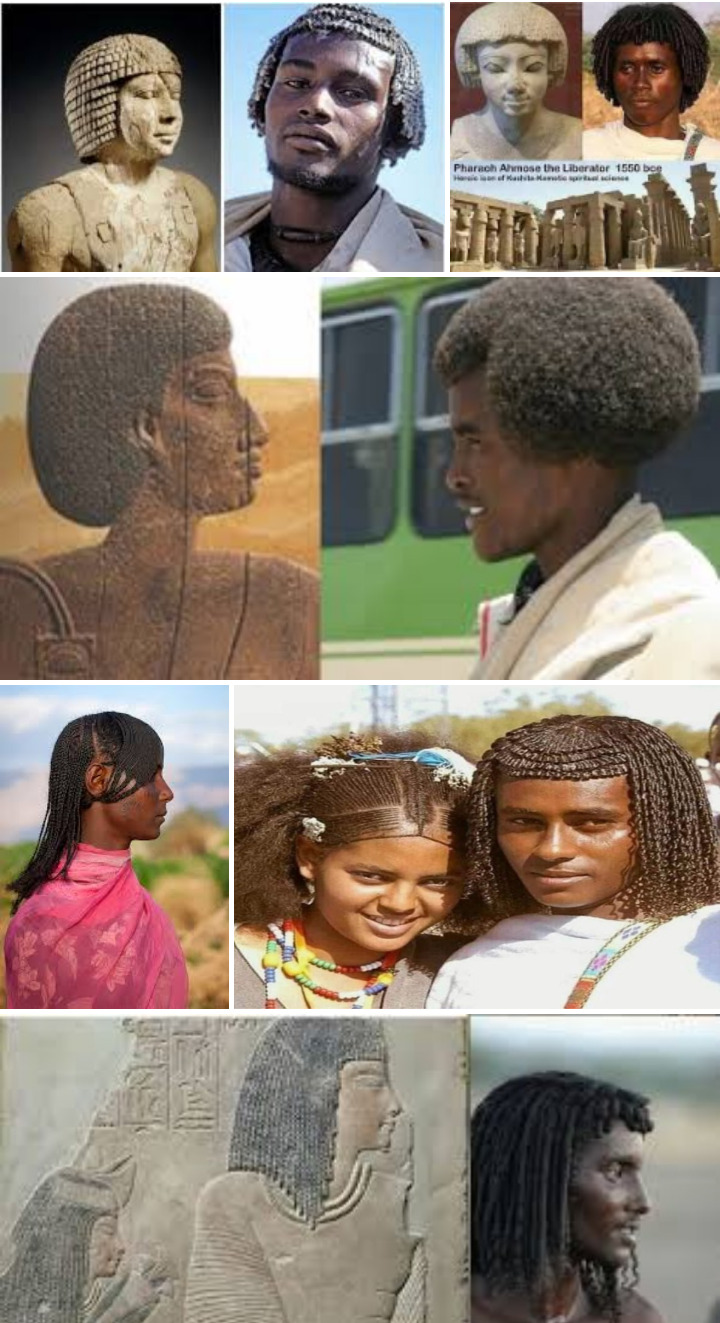
East Africa

E Africa
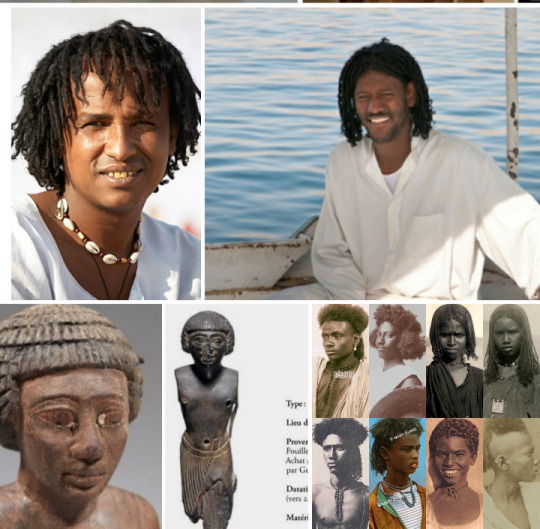
S. Egypt

Egyptians (Nubian, Bishari)
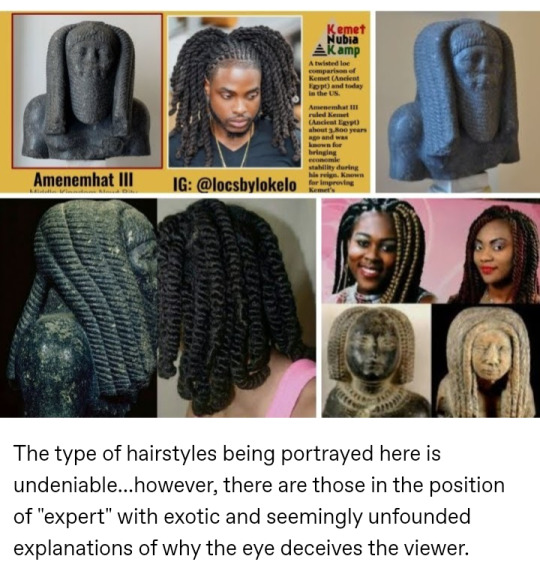
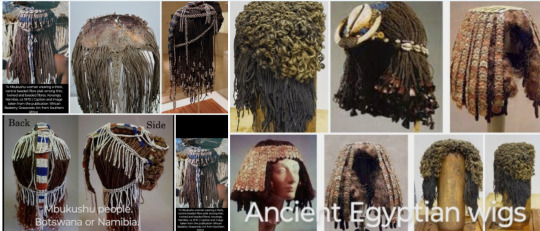
South African traditional wigs left and ancient Egyptian wigs right
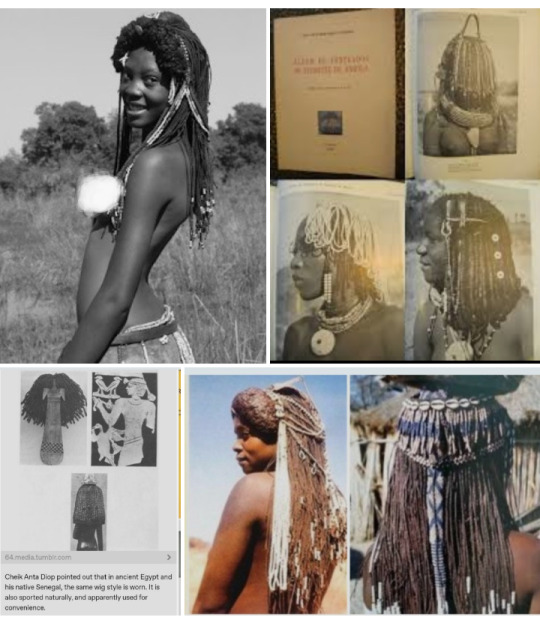
Other West Africans wore these styles traditionally. The name of the book ( top right) is called Album de Penteados do Sudoeste de Angola. Estermann, Carlos. Published (translation from Portuguese to English: Album of Hairstyles from Southwest Angola. Estermann, Carlos.), by Imprensa Portuguesa, Lisboa, 1960., 1960. The purpose is not to establish a connection with West Africa, and Egypt, but to show these hairstyles are innate in black and black adjacent cultures…. and sometimes worn in the form of a wig though natural as well. Even African American young ladies, who are often teased for extensions, will still twist them into micro braids. It's not that far off from the practices of their West and Central African ancestors.
bottom left-Cheik Anta Diop pointed out that in ancient Egypt and his native Senegal, the same wig style is worn. It is also sported naturally, and apparently used for convenience.
bottom right picture - .A Mbukushu woman wearing a thick, central beaded fibre plait among thin, twined and beaded fibres. Kovango, Namibia. ca 1970 | Caption and image taken from the publication 'African Basketry Grassroots Art from Southern Africa'
More shocking details on ancient Egyptian wigs and hair on mummies, that are not commonly shown
link
Be sure to stop at the bottom where it says "More from @afcnamrcn23". Don't be distracted by the pictures and links under that. They will occur again so that you can continue with the main post in sequence.
.
0 notes
Text
Excellent pictures taken at the Neues Museum of Berlin by a young man on YouTube called The King's Monologue. It's a Livestream called The Neues Museum of Berlin BLEW MY MIND (Pts 1 and 2). He makes very scrupulous observations that many brush over or block out. At the bottom of this compilation is his trip to the Louvre Museum in Paris reveal some shocking rarities.
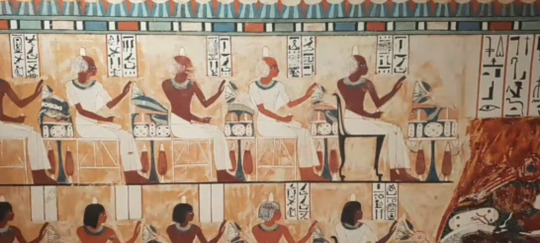
color variation in males from User, Elephantine, dynasty 18.
Whole scene
https://www.archaeology.wiki/wp-content/uploads/2014/03/elephantine-tomb.jpg
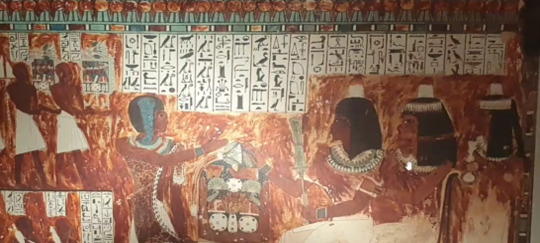
.

.
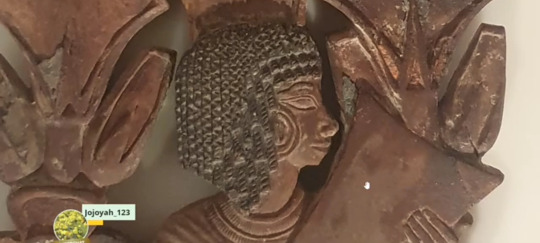
.
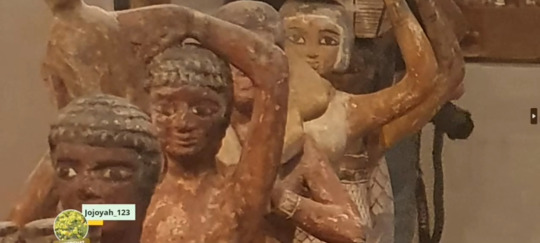
.
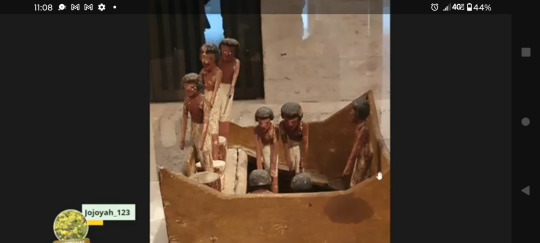
.

Early dynastic period
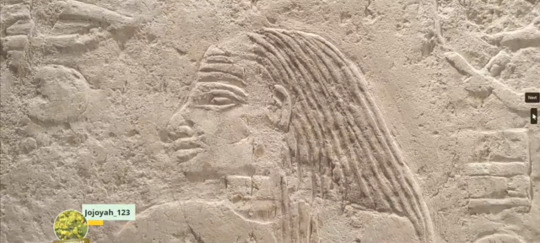
Early era
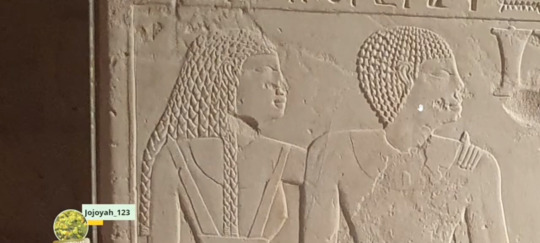
.

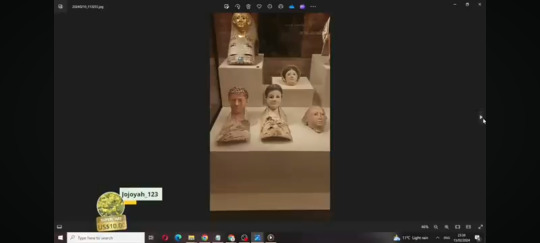
Roman era
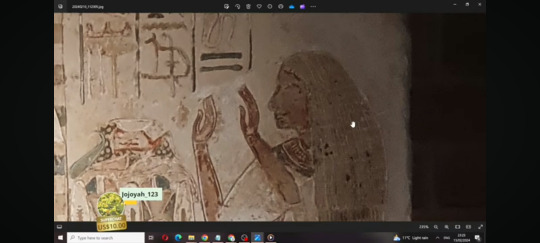
. woman just as dark reddish brown as the man

A lady from Antigua informed him that the style is called sisterlocks in modern times. These hairstyles were worn in West and Central Africa as well. See Diop's statement in the link about traditional hair of women in Senegal before the 1930s, both natural and wig (only seen in non Islamic areas after that time)...
1
https://www.tumblr.com/shwat2013/680165437249585152/whether-wig-or-not-i-think-people-sometimes?source=share. .
2
Wolof girl Senegal 1800s
a
https://64.media.tumblr.com/a236b85b80a40ea0690388ff73d5decc/c0bc9aed5175f391-df/s640x960/2ec47a43c894be96d47a61bc4ca79f771a80e1c4.jpg .
b
https://commons.wikimedia.org/wiki/File:Senegal-thioup-bazin.jpg#mw-jump-to-license
3
Just like ancient Egypt, the same wig form is traditionally worn in Nambia, Congo, Angola (of old), East Africa etc. Also worn naturally
link
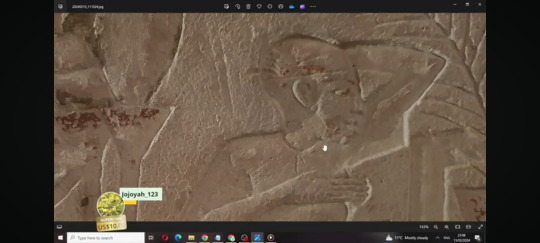
.

. Sahure 5th dynastic period
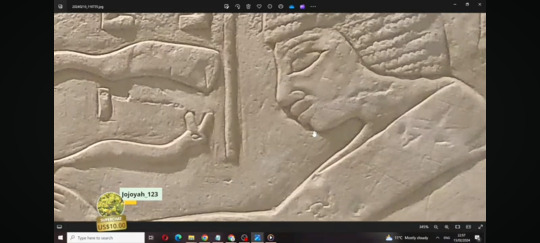
Early period
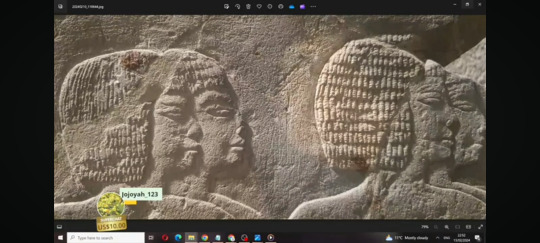
Early period
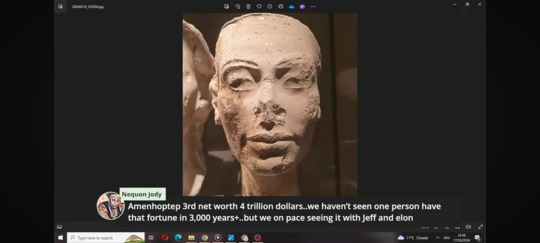
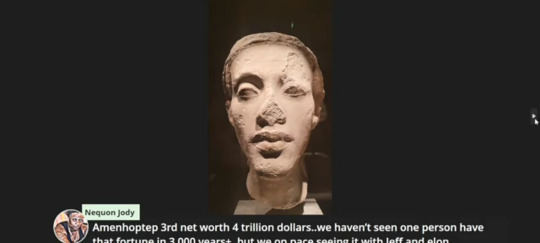
Have to point out that these are actual faces of Akhenaten and Nefertari because it's taken from a cast mold. THIS MEANS YOU'RE LOOKING AT THEM. See museum link below picture for more on this technique of sculptor Thutmose. As we see the museum label once informed us that it's one of the plaster molds, but now just says portrait heads. The following picture is not from the YouTuber
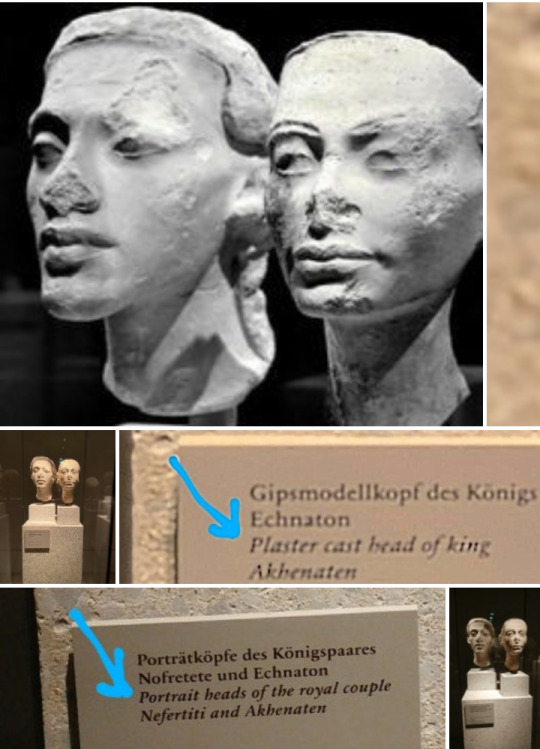
The following description is from the Egyptian Museum in Berlin, about one plaster cast mask (Inv.-No. ÄM 21356), but it really speaks on the technique of all portraits like it of the era. Most are from the ancient artist Thutmose of the Achet-Aton (today called Amarna), in Middle Egypt, which was the capital of Egypt during the reign of Akhenaten and Nefertiti. It reads… This portrait study gives a unique view of the work technique of the artist; first a form was taken directly from the subject"s face and a gypsum copy was made from the mould. The copy was then finished by the sculptor in various details, especially the eyes since these had to be closed when the mask was taken from the face. In these rare instances we are directly confronted with 'real' people even if we do not know their names or anything else about them.
Scroll to Mask from Amarna Portrait of a Man.
http://www.egyptian-museum-berlin.com/c52.php
To see more actual faces from cast molds (rare), scroll down to "A few more every day Egyptians of the Amarna period", near bottom of the compilation in this link
https://www.tumblr.com/shwat2013/677380292714037248/amenhotep-iii-at-the-new-york-metropolitan-museum?source=share
picture with old museum label
https://www.reddit.com/media?url=https%3A%2F%2Fi.redd.it%2F3q2tykijo0da1.jpg.

In mythology, Memnon was a king of Aethiopia (Sudan in this case) and son of Tithonus and Eos. As a warrior he was considered to be almost Achilles' equal in skill. During the Trojan War, Here, he is compared to Akhenaten
Princess
link
18th dynasty man from Louvre

link
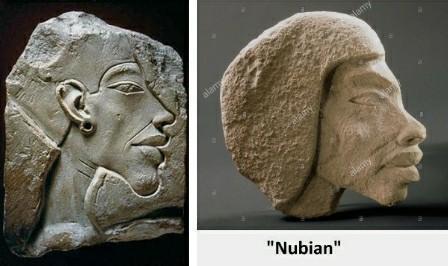
.Akhenaton on the left and a Nubian at the Flinders Petrie Museum of archeology, London, England on the right
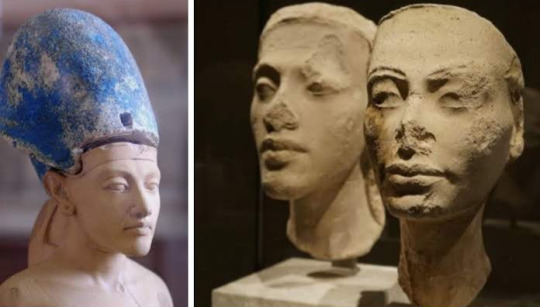
This is a more of a stylized "artist conception on the left". We can see on the actual face from the sculptor studio on the right, he really didn't have a straight pointed nose...but rather more rounded, wide and flat. Strangely, I can see the faint character of the real person in the stylized conventional portraits
..

. Tiye
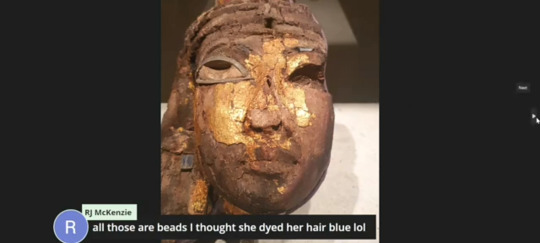
.Tiye or a relative
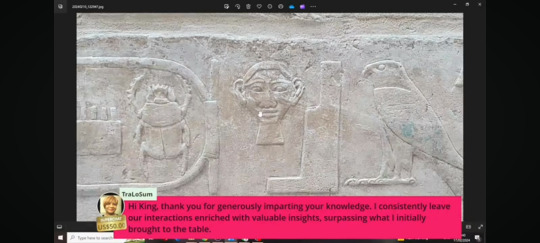
.

. hieroglyph for face
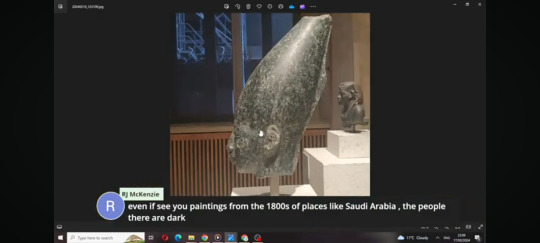
. Amenenehat III
.
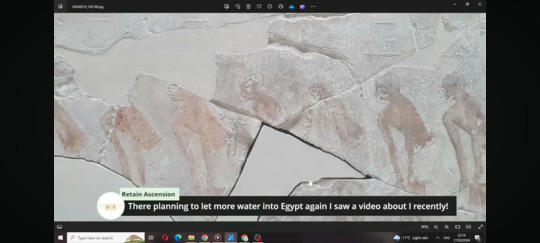
.
More from the YouTuber. This time at the Louvre Museum (2 parts)
Part 1
Ink
Part 2
link
Clean, clear and unadulterated images from the video "MOST BEAUTIFUL NON-ROYAL TOMBS! WESTERN THEBES (LUXOR) EGYPT", as she walks through... These are wonderful and unbias. There's no way you can see these and not at least ask yourself... are these the people of the Aswan Elephantine area who lean more "black" in appearance
Video link
Be sure to stop at the bottom where it says "More from @afcnamrcn23". Don't be distracted by the pictures and links under that. They will occur again so that you can continue with the main post in sequence.
0 notes
Text
All of the following are from the early dynasty of ancient Egypt (4th-6th). These were all taken between the latter 1800s - early 1900s. Notice the male and female couple in the top pictures. Both are painted in a dark tint. The one in color is from modern times (apparently). You can clearly see something is amiss in tone when the color photo is changed to black and white. Yellow, seen on the lady, doesn't translate to the same contrast as the original old photo. Even the male seems compromised in tonal value, and necklace deliberately darkened. Both have paint missing where it is in tact in old photos (museum/university links under photos to see original old pictures). More at the bottom of this compilation to illustrate the old and new pictures are the same statue, but major changes












Museum/university links link http://giza.fas.harvard.edu/photos/12326/full/ link (2)
a http://giza.fas.harvard.edu/photos/24778/full/ b
http://giza.fas.harvard.edu/objects/25327/full/
link http://giza.fas.harvard.edu/objects/17741/full/ link http://giza.fas.harvard.edu/objects/54519/full/
link
.http://giza.fas.harvard.edu/ancientpeople/543/full/
link
.http://giza.fas.harvard.edu/photos/28688/full/
Notice the couple at the top. The man is darker than the usual reddish



Darker than reddish at Louvre
link
Perhaps... Seminar for women education Aswan From the article:- …Association of Egyptian Female Lawyers implemented a seminar which aimed at developing and enhancing the presentation skills of women leaders. The seminar focused on a number of topics such as the current political situation and how much it affects women’s living conditions, the role of women in Upper Egypt… …

https://aeflwomen.com/en/in-collaboration-with-the-regional-union-for-ngos-in-aswan Nekhebu, an official for Pepi in the early dynasty. The top two pictures are from the very early 1900s (the 19 -aughts - teens)






1
https://www.pinterest.com/pin/631981760207929976/
2
http://giza.fas.harvard.edu/ancientpeople/611/full/
Vizer Idi of the 6th dynasty. From "A Provincial Statue of the Egyptian Sixth Dynasty (pg 17) 1962, Henry G. Fischer. The one of him in the Metropolitan Museum today looks totally different.

Nefu with wife

The two top pictures show early dynasty statues of a man and woman (Nefu and wife, 5th dynasty). A Nubian Egyptian couple dance at a celebration in Aswan (bottom) - from the documentary "Struggles Over The Nile - Masters No More". To me, the idea of the dark reddish brown color sometimes representing a recognizably "black" person, and the yellow color of a common Northern Egyptian or western Asiatic woman, comes directly alive in this scene

link

We have another one with the same diminished color in the newer pictures vs the ones from a century ago




Bottom three in above pictures are more clear. On the University/Museum link, they are in the 8th panel down in side pictures
Museum/university link
http://giza.fas.harvard.edu/objects/26421/full/
Rare color photo of Menkauhor Kaiu
a
https://meretsegerbooks.cdn.bibliopolis.com/pictures/M9080d-14.jpeg?auto=webp&v=1711147932
b
https://en.wikipedia.org/wiki/Menkauhor_Kaiu
Be sure to stop at the bottom where it says "More from @afcnamrcn23". Don't be distracted by the pictures and links under that. They will occur again so that you can continue with the main post in sequence.
.
0 notes
Text

Egyptian Nubian man (second row on left), early dynastic figurines, and an old photo of East African young men.

Bust of a BaKongo Young Lady of West Africa (between Angola and Congo along Atlantic coast), bronze, by British sculptor and African explorer Herbert Ward (1863-1919) . Orsay's Museum. Paris. France. The young lady on the bottom right is from that area in West Africa, and bottom left is of the Oromo clan of east Africa.
The purpose is to show that since time immemorial, these hairstyles are more innate and continuous in people of a "black" persuasion worldwide, and not to suggest a connection between Egypt and Nubia to West and Central Africa



Tjeteti, an official of Pepi II ( early period), NY Metropolitan Museum (MET)

A modern Egyptian Nubian man, Kenyans from an old photo, and a bust of a West African woman by a British sculptor of the 1800s, next to 5th and 6th dynasty ancient statues
Be sure to stop at the bottom where it says "More from @afcnamrcn23". Don't be distracted by the pictures and links under that. They will occur again so that you can continue with the main post in sequence.
.
0 notes
Text




.
.
Be sure to stop at the bottom where it says "More from @afcnamrcn23". Don't be distracted by the pictures and links under that. They will occur again so that you can continue with the main post in sequence.
0 notes
Text
People of Chad


Be sure to stop at the bottom where it says "More from @afcnamrcn23". Don't be distracted by the pictures and links under that. They will occur again so that you can continue with the main post in sequence.
.
0 notes
Text
🇳🇬Nigeria
https://www.pinterest.com/shwat2013/nigeria/
🇲🇱Mali
https://www.pinterest.com/shwat2013/mali-ppl/
🇹🇩 Chad
https://www.tumblr.com/afcnamrcn23/737458469134827521/people-of-chad?source=share
🇸🇱Sierra Leone
https://www.pinterest.com/shwat2013/sierra-leone/
🇸🇳Senegal
https://www.pinterest.com/shwat2013/senegal/
🇨🇲Cameroon
https://www.tumblr.com/afcnamrcn23/737459648985169920?source=share
🇳🇪Niger
https://www.pinterest.com/shwat2013/niger/
🇬🇦Gabon
https://www.pinterest.com/shwat2013/gabon/
🇬🇲Gambia
https://www.pinterest.com/shwat2013/gambia/
🇹🇬Togo
https://www.pinterest.com/shwat2013/togo/
🇹🇿Tanzania,
🇿🇼Zimbabwe,
🇰🇪Kenya,
🌍South Africa
https://www.pinterest.com/shwat2013/tanzania-zimbabwe-kenya-south-africa/
Be sure to stop at the bottom where it says "More from @afcnamrcn23". Don't be distracted by the pictures and links under that. They will occur again so that you can continue with the main post in sequence.
.
0 notes
Text








said to be Egypt 1865...?

1800s
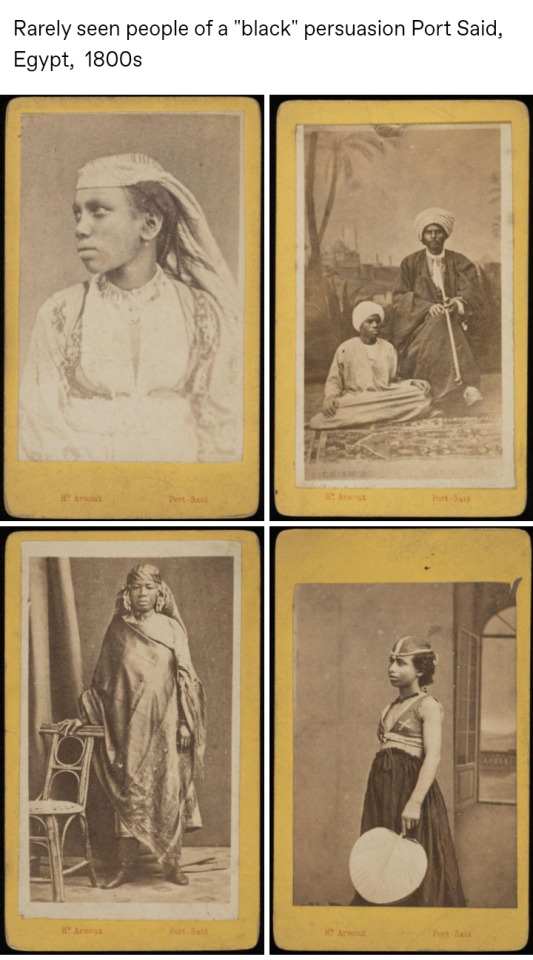
Port Said

1870s
Links
link
Be sure to stop at the bottom where it says "More from @afcnamrcn23". Don't be distracted by the pictures and links under that. They will occur again so that you can continue with the main post in sequence.
0 notes
Text
.

Egyptian hieroglyph for face ("hr"). For the face hieroglyph, (Gardiner sign listed no), scroll to List of hieroglyphs, then D2.. An Egyptian language biliteral with the value hr, ḥr. The sign is also an ideogram for 'face', and related words. https://en.wikipedia.org/wiki/List_of_Egyptian_hieroglyphs
links
a
museum
https://www.metmuseum.org/art/collection/search/549994
b https://www.metmuseum.org/art/collection/search/546031
c
https://commons.wikimedia.org/wiki/File:Hatshepsut_temple10_b.jpg#mw-jump-to-license




Man of the Middle Kingdom, Walter's Museum
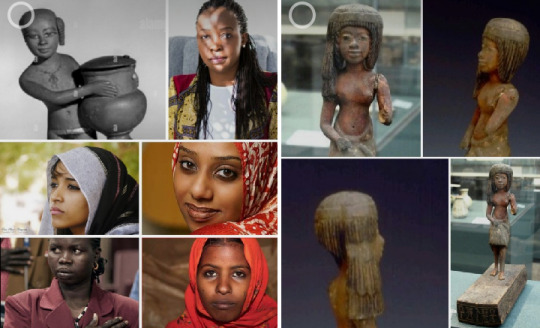
Ladies of Northern Sudan and a Egyptian princess of the 18th dynastic period. They will remind us that the statue of the young lady on the top left is a servant, because she does look black African (however, Egyptian as far as we know), but the princess looks more so on the right. It's strongly believed she was a child of Tiye.
links
1
Though labeled a "prince" on some sites (...?), a inscription reads... Princess, great of favour, Lady of the Two Shores, the Beloved, [2] the Desired, Mistress of Upper and Lower Egypt great of [3] splendour, the 'Holy Jewelry' , the great royal wife Tiye, may she live." Anyone can visually see this is a Young lady of the "black" persuasion
https://www.globalegyptianmuseum.org/detail.aspx?id=10410
2 https://www.flickr.com/photos/manna4u/6081857135

Standing man of the early period ancient Egypt

12th dynasty young man, Walter's Museum https://art.thewalters.org/detail/21015/male-head-4/
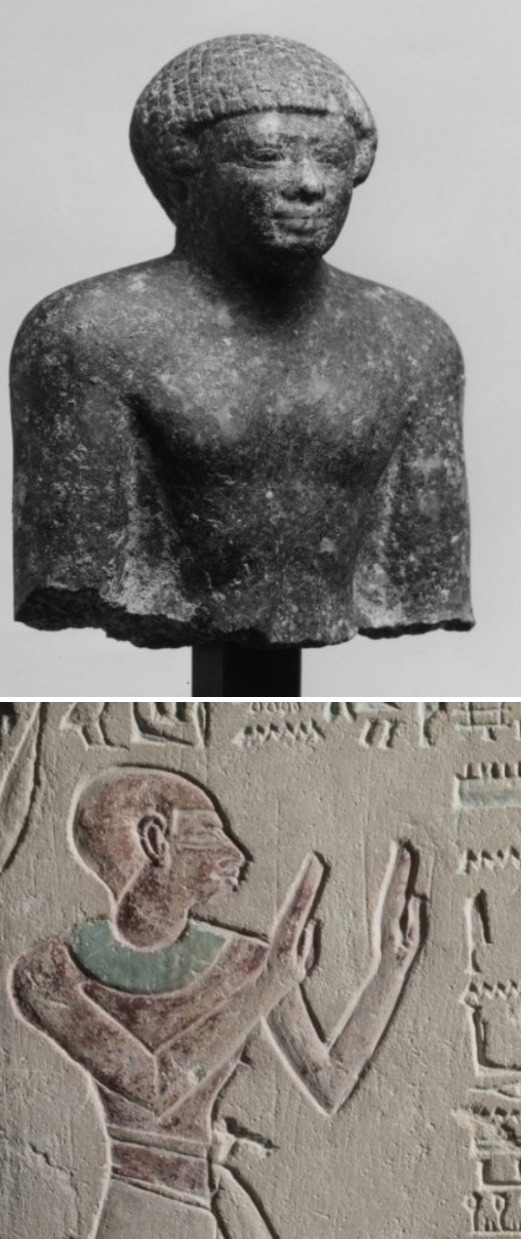
(top) Bust of a man, First Intermediate period of Egypt (2181-2040 BCE, dynasties 7-10)), Walter's Museum . (bottom) STELA OF AMENYSONEB – GARSTANG MUSEUM (dynasty 13)
https://art.thewalters.org/detail/11033/bust-of-a-standing-man/
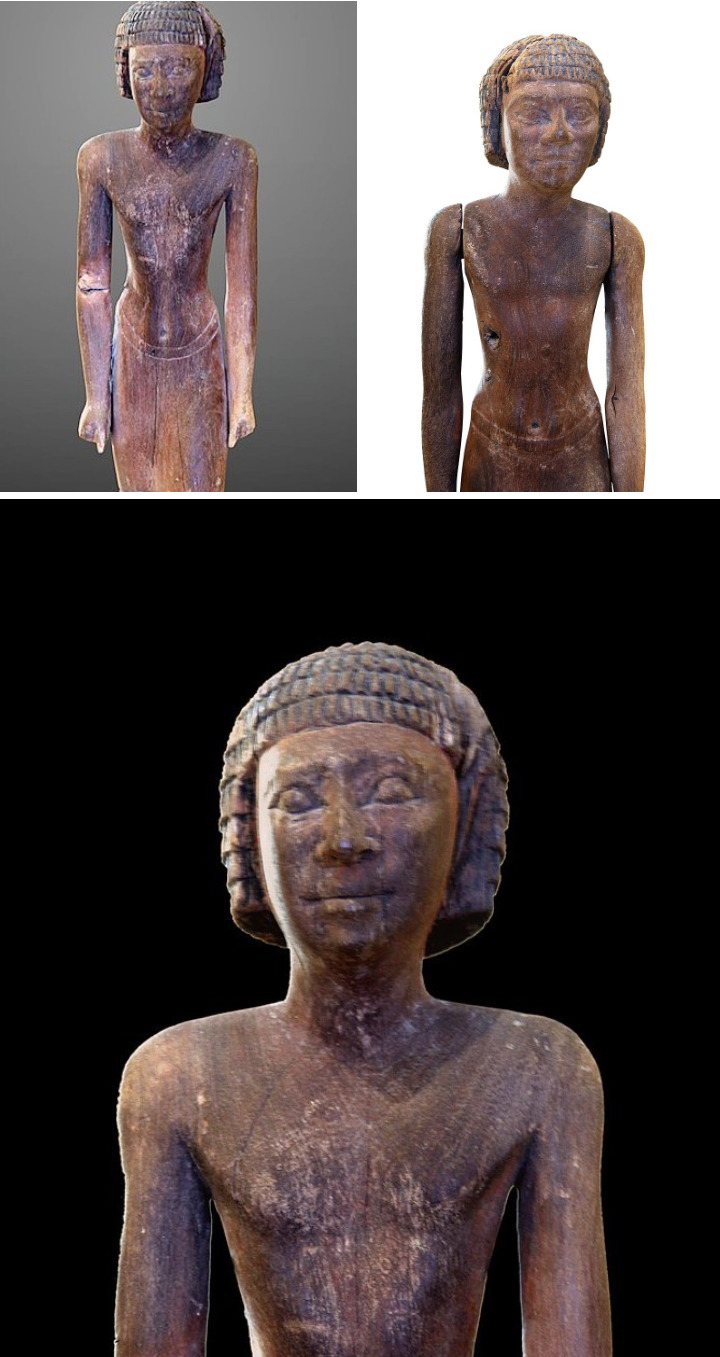
Man of the old kingdom of ancient Egypt, Louvre Museum

Middle Kingdom ruler, Walter's Museum
All of these are from the middle kingdom.
Shown in the publication... Statues royales et privées de la fin du Moyen Empire et de la...Deuxième Période intermédiaire (1850-1550 av. J.-C.) Simon Connor Middle Kingdom Studies 10
(Royal and private statues from the end of the Middle Kingdom and the Second Intermediate Period (1850-1550 BC) Simon Connor Middle Kingdom Studies 10)

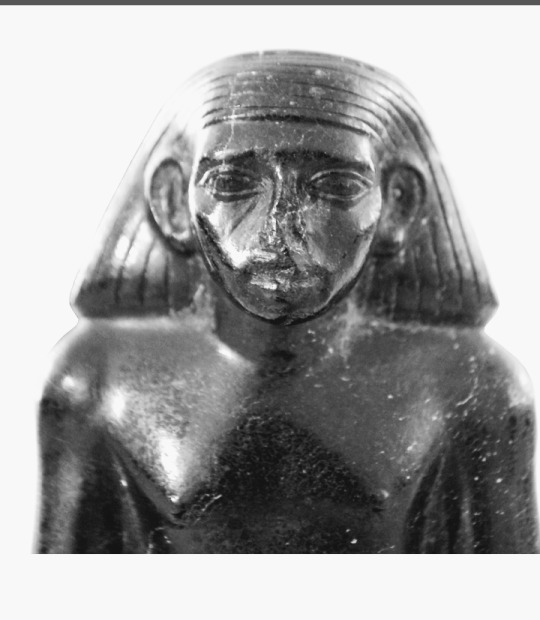
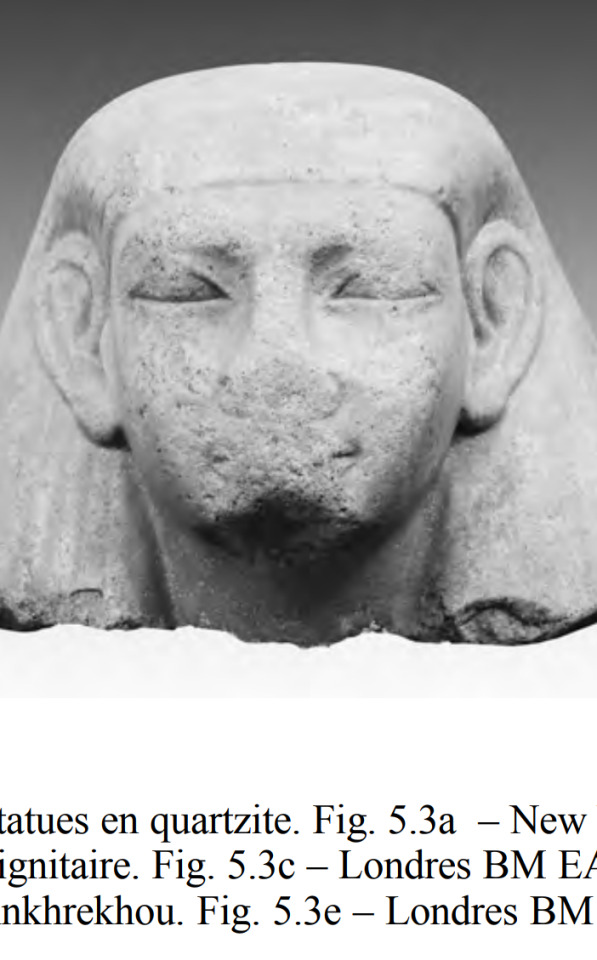

For the pictures above, the caption in French translates to english ... 3rd 5.3f Fig. 5.3a-f: quartzite statues. Fig. 5.3a – New York MM 12.183.6: royal head (early 13th century d.).
Fig. 5.3b – Boston 28.1: face of a dignitary (just saying he's a dignitary is kind of vague and "nebulous". Forces me to wonder if it's actually Senusret III or his son Amenenehat III in a more realistic and less stylized manor. Notice the faint stripes of the nemes head cloth.)
Fig. 5.3c – London BM EA 848: bust of a dignitary. Fig. 5.3d – London BM EA 1785: statue of Governor Ankhrekhou. Fig. 5.3e – London BM EA 36296: male head. Fig. 5.3f – Coll. priv. Christie’s 1999a: bust feminine.
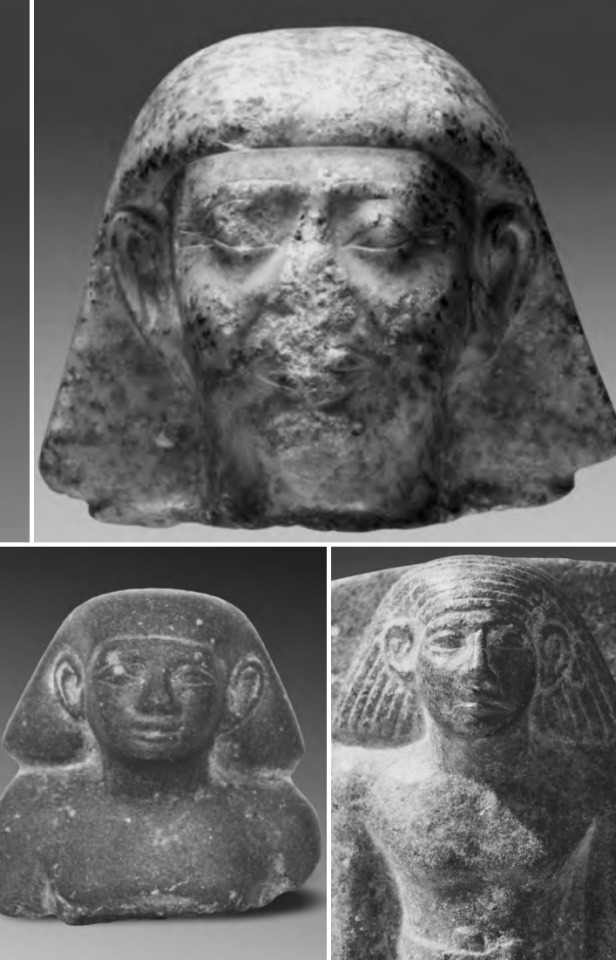

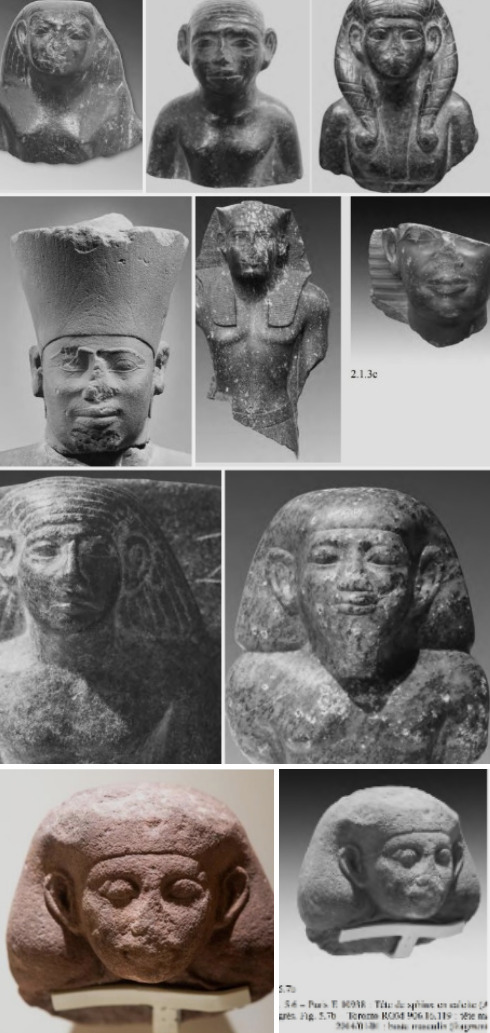




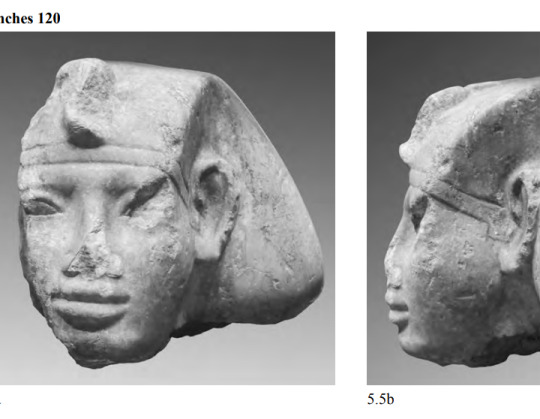
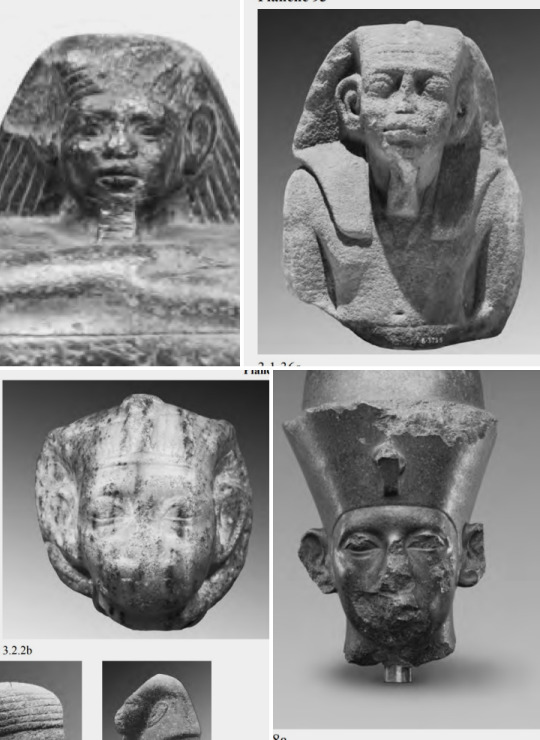
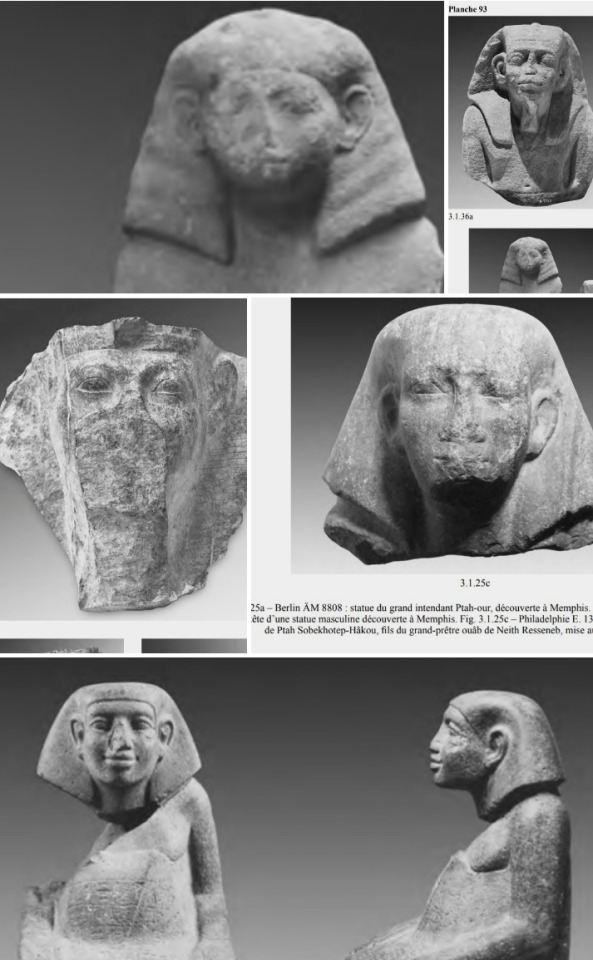


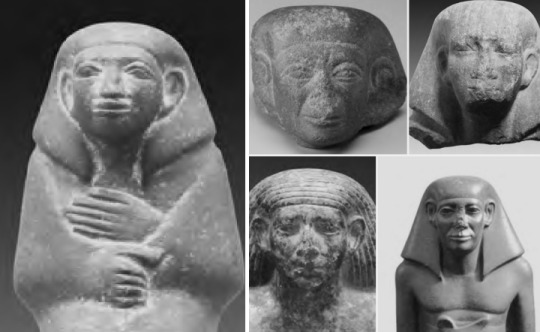

Statuette of Imenytirry in long kilt and a seated man from Mentuhotep's era, NY Metropolitan Museum, and another middle kingdom face (right)

link
link
link
More from other eras
link
link
link
link
link
link
Be sure to stop at the bottom where it says "More from @afcnamrcn23". Don't be distracted by the pictures and links under that. They will occur again so that you can continue with the main post in sequence.
.
0 notes

